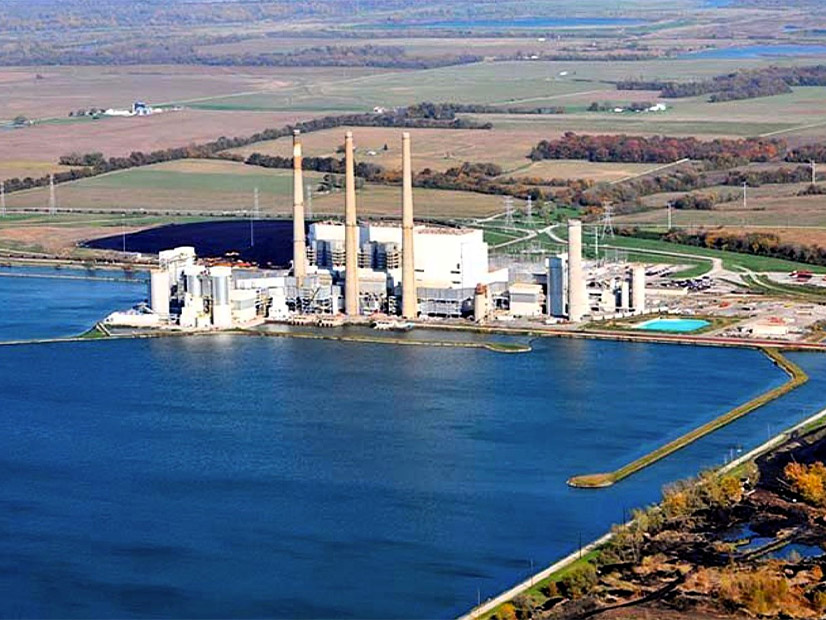
Nearly a decade on, the saga over Dynegy’s manipulation of MISO’s capacity market continues, with FERC denying the company’s asks for procedural changes that might have softened repercussions in the case.
FERC dismissed all four of Dynegy’s rehearing requests related to evidence, intent, a report on remand, and the bounds of FERC’s jurisdiction in an Oct. 4 order (EL15-70).
The latest order is part of FERC’s yearslong inquiry into Dynegy’s apparent manipulation of clearing prices in MISO’s 2015/16 capacity auction. This year, the commission directed hearing and settlement procedures. (See FERC Sets Dynegy’s MISO Market Manipulation Case for Hearing.)
Approximately eight years after the auction, commission staff unwound FERC’s original conclusion that Dynegy — now owned by Vistra — conducted itself appropriately in the auction. That’s due to a D.C. Circuit Court of Appeals 2022 ruling that FERC hadn’t sufficiently supported its decision to accept the $150/MW-day Southern Illinois capacity price produced in the 2015/16 auction. (See FERC Staff Finds Dynegy Manipulated 2015 MISO Capacity Auction.)
This time, FERC rejected Dynegy’s fresh argument that it didn’t know it was manipulating MISO’s capacity market by refusing to sell capacity at a loss ahead of the auction. The commission said Dynegy should have been aware the actions it took to make sure one of its resources set the clearing price for Southern Illinois to raise profits amounted to manipulation.
FERC also said Dynegy’s argument ignores intent.
“Dynegy’s argument that its pre-auction sales strategy was ‘driven by a desire to stop losing money’ misses the point because it ignores the broader question of whether that sales strategy was part of an intentional or reckless effort to set the Zone 4 clearing price in the auction,” FERC said.
Dynegy argued it “could not have known that [FERC’s] market manipulation rules would compel Dynegy to operate a charity — mandating that Dynegy donate its capacity to the market at prices that would not cover its going-forward costs.”
FERC declined to take up Dynegy’s claim that its alleged manipulation scheme might involve non-jurisdictional retail transactions in South Carolina rather than the MISO portion of Kentucky. The commission said it is best to “defer any legal determination as to jurisdiction until after the hearing because certain disputed issues of material fact are likely to bear upon the jurisdictional question.”
Dynegy also proved unsuccessful in persuading FERC to strike from the record its heavily redacted report from June 2022 that concluded that manipulation occurred.
FERC said the report is necessary to the case because the D.C. Circuit Court of Appeals ordered FERC to establish a public record in the case, which was lacking after the nonpublic investigation and a poorly explained decision in 2019 to accept the Zone 4 capacity price.
“[P]arties and participants are free to rely on the remand report in making their cases, and at that point, Dynegy is free to challenge the parties’ or participants’ use of the remand report. … In this way, information would be appropriately considered by the presiding judge in an evidentiary hearing encompassing allegations of market manipulation,” FERC said.
Finally, FERC rejected Dynegy’s claim that FERC didn’t share exculpatory evidence with the company during the nonpublic investigation.
Dynegy contended that it could have used nonpublic, video footage of testimony to help prove its innocence.
FERC countered that the investigation was closed without a show-cause order or sanctions and pointed out that it’s under no obligation to share exculpatory evidence in a Section 206 proceeding. Further, the commission said its staff combed through materials and didn’t find anything that could be deemed exculpatory.
At any rate, FERC said the footage Dynegy singled out is now part of the nonpublic record in the case and can be addressed during hearing proceedings.


